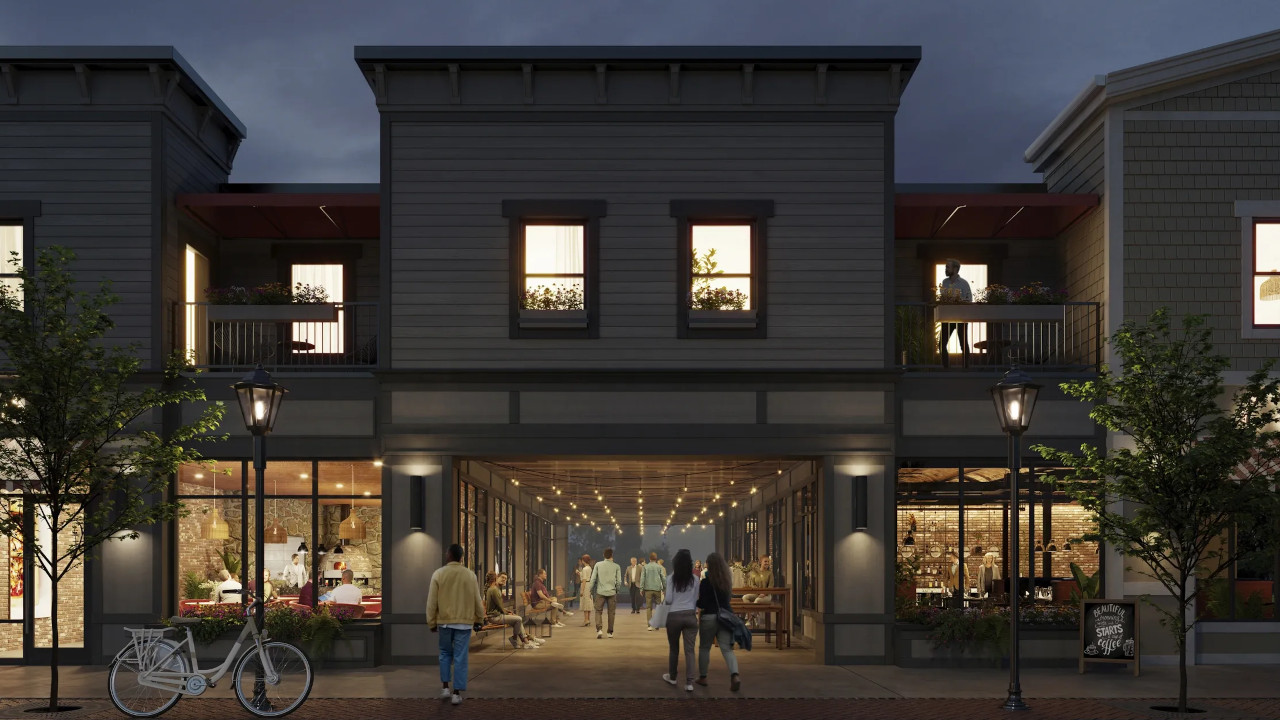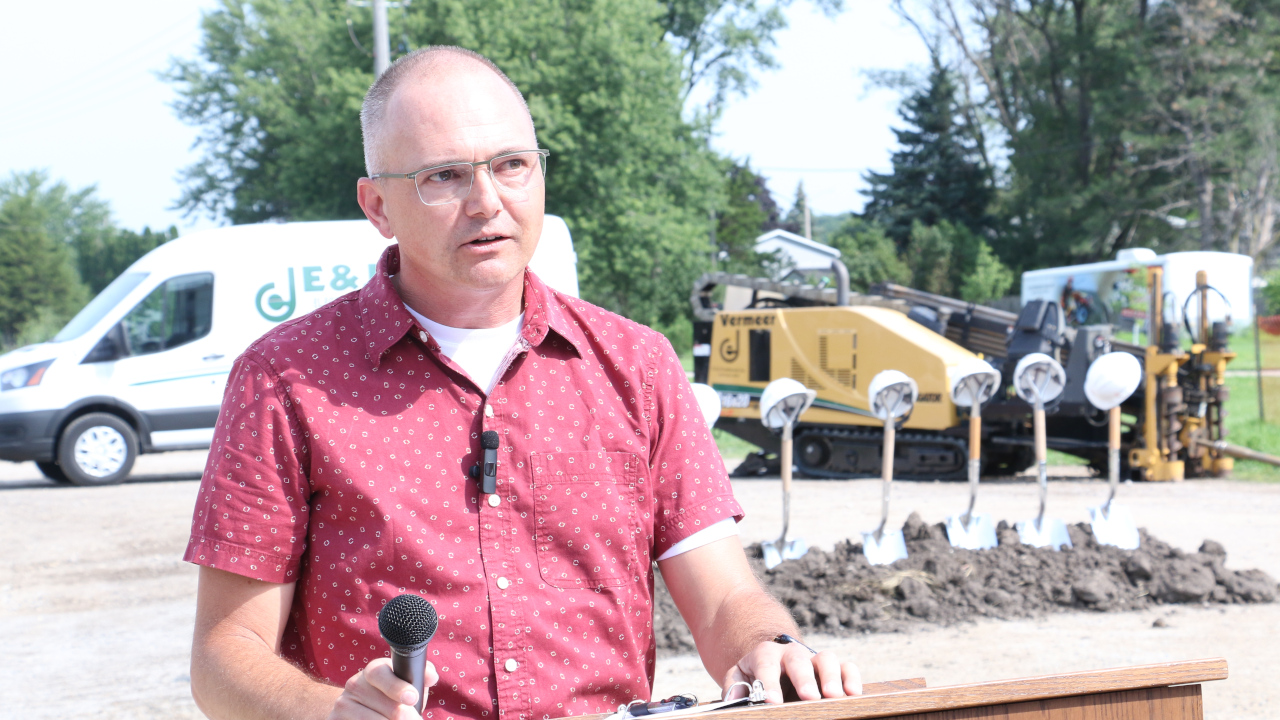
Ely has been one of the fastest-growing communities in the Corridor in recent years. In the process, much of its 150-plus-year historical legacy has been minimized.
An ambitious Old Town Ely rehabilitation and improvement project aims to change that, bridging the town’s past and future in an effort to appeal to both local residents and outside visitors.
“It’s kind of twofold,” Ely City Administrator Eldy Miller said of the far-reaching project. “With a town that’s growing this quickly, you really fight hard to hold on to your heritage. And part of that, when you have so many new people, is helping the newer residents to understand the history of the community.
“A lot of the town is new,” noted Mr. Miller, an Ely resident since 2006 who served as mayor from 2015 to 2019 and became city administrator in October 2023. “Our downtown is our last core. We call it ‘original Ely,’ or ‘old Ely.’ And as we were starting to invest in our downtown and making some changes, we came up with an idea to adopt a moniker, the Old Town District. So as we’re going through our phase one, we’re bringing in design elements to help promote the original Ely.”
Developers broke ground on the centerpiece of the project, the $7 million Main Street Legacy development, on Monday, July 22. But as visually compelling as that development will be, there’s much more to the Old Town Ely plan than a single building.
Ely history focused on railroad, agriculture
Founded in 1872 and named for John F. Ely, treasurer of the Burlington, Cedar Rapids and Northern Railway – who, by some accounts, may have never visited the town that bears his name – Ely gained prominence for its presence along the rail line and for the grain elevator that first bore the name F.J. Krob and Company in 1910.
But in more recent years, the town’s character has changed dramatically, with a host of new housing developments that have swelled the community’s population from 517 in the 1990 census to more than 2,400 today.

The other significant development in Ely, Mr. Miller said, came with the opening of the Cedar Valley Nature Trail, which was extended to Ely in 2010 and cuts through the heart of the city from north to south, connecting with the Hoover Trail that now extends to Solon.
The Ely portion of the trail is now the second-busiest trail segment in Linn County, he said, and that level of usage has dramatically changed the character of the community.
“We got really lucky that our trail goes right through our downtown,” Mr. Miller said. “It’s really gone from our businesses struggling to stay open, to now we’re almost leaning on them to have more hours and be open more, because especially in the summer, people are coming through town and they want places to stop.”
Infrastructure revamped to support development
As the potential has emerged for business growth in Ely’s downtown core, city leaders realized infrastructure improvements would be vital to support new economic ventures.
So, armed with financial tools such as a TIF (Tax Increment Financing) district designation, a local-option sales tax and increased city fees, the city pursued a wide-ranging revamp of the city’s infrastructure as Phase 1 of what has become known as the Old Town Ely project.
The revamp, with a price tag of about $3 million, includes new stormwater, water and sewer lines, widened roads, sidewalks, additional parking areas, and stormwater management improvements to help the city cope with a propensity for flash flooding. In many cases, the improvements are being made to decades-old systems.
“We’re redoing everything downtown,” Mr. Miller said. “Pretty much everything is getting touched.”
Several more phases are set to come online in coming years, from new parking areas for park-and-ride cyclists to a new pocket park with bicycle-friendly amenities.
Main Street Legacy will be development centerpiece

With an estimated price tag topping $7 million, the Main Street Legacy project at the intersection of Dows and Main streets will anchor a striking new phase of development for Old Town Ely.
The project, which held a groundbreaking ceremony for city leaders and project supporters July 22, will comprise a mixed-use development, with commercial spaces on the first floor and second-level condominiums.
The project is the brainchild of Mark Krob, whose family established the F.J. Krob and Company grain elevator in 1910. It’s being built on the site of the elevator’s former weigh station, and for Mr. Krob, the project is more than an entrepreneurial venture – it represents a key element of his family’s generational legacy in Ely.
“It’s a solid project,” he said. “But what really pushed us into making this decision was that we wanted to figure out what kind of legacy we wanted to leave this community. It could have been a lot easier just to sell the ground off to whoever would buy it and leave it to them to build whatever they wanted to build. This way, we have some oversight on what happens here and how this space is used.”
The building’s architectural design echoes that of other Ely downtown buildings, and the building will be accessible from the front, rear and one end, further embracing its proximity and accessibility for trail users, along with a pass-through for pedestrian access between Main Street and the trail itself.
Main Street Legacy represents the Krob family’s first development venture outside grain elevators – F.J. Krob still operates elevators in Solon, Walker and Rowley, and while the Ely elevator itself closed in 2021, the grain bins at the site remain in use.
But to Mr. Krob, the project – embracing the proximity to the nature trail, as well as the city’s rail and ag legacy – will serve as a new phase of progress for a rapidly-growing community, and a recognition of the Krob family’s important role in the city’s history for more than a century.

“Our business has had to adapt and change many times, and the community around us has changed,” he said. “Ely no longer is the same farm-based community than it used to be. The Krob family found itself in a situation where we knew that we must make a decision on how to adapt to that change. resist it, cut and run from it or embrace it. We chose to embrace it … For some people, progress is a dirty word because at its essence, progress means change. And it’s natural to fear change.
“But if you zoom out and take a look at the bigger picture of Ely’s history, you’ll see that what is perceived as progress is actually going back to earlier times when Ely started as a vibrant, bustling, business-filled community,” he added. “We embarked on this project because we believe that progress for Ely is the full realization of what it was always intended to be. And it is already well on its way, in contrast to many small communities in Iowa which are still struggling to recover. We are blessed to be able to seize upon this unique opportunity to leave a positive, lasting impact upon the community which has served us for so long.”
Other partners in the Main Street Legacy project include Rinderknecht Construction, Aspect Architecture, Melanie Olson Design Group and Skogman Realty.
More projects could be on the horizon
When the Main Street Legacy is completed – construction is expected to wrap up in about a year – developers and city leaders will assess the potential for future developments in Ely’s downtown area.

Mr. Krob said he’s pursuing options for restoring the historic former elevator building, and further projects could extend down both Main and Dows streets. Downtown buildings that have been converted to housing may be revamped for business use.
Anchor businesses like Dan & Debbie’s Creamery, Odie’s Bar and Grill and My Mom’s Bakery could be joined by service providers and other retailers, and historic storefronts – which have been largely preserved with their original slat designs – could be restored.
Mr. Miller said the ultimate goal is to create a community that provides for the needs of its residents, as well as serving as a regional destination – a more modest version of an area like Czech Village-New Bohemia in Cedar Rapids or the villages of Amana.
“Sometimes the fun part is figuring out your place in this area,” he said. “Our goal isn’t to be growing to the levels of North Liberty and Tiffin. That’s great what they’re doing, but that’s not really our goal. Our goal is to be a community that’s growing the way we want to grow. Those communities are also doing their best to be that. Due to their proximity to (Interstate) 380, they’re just erupting, which is exciting. But I’ll be really excited to see Ely in 10 or 15 years from now, just to see what that purposeful growth looks like.”




